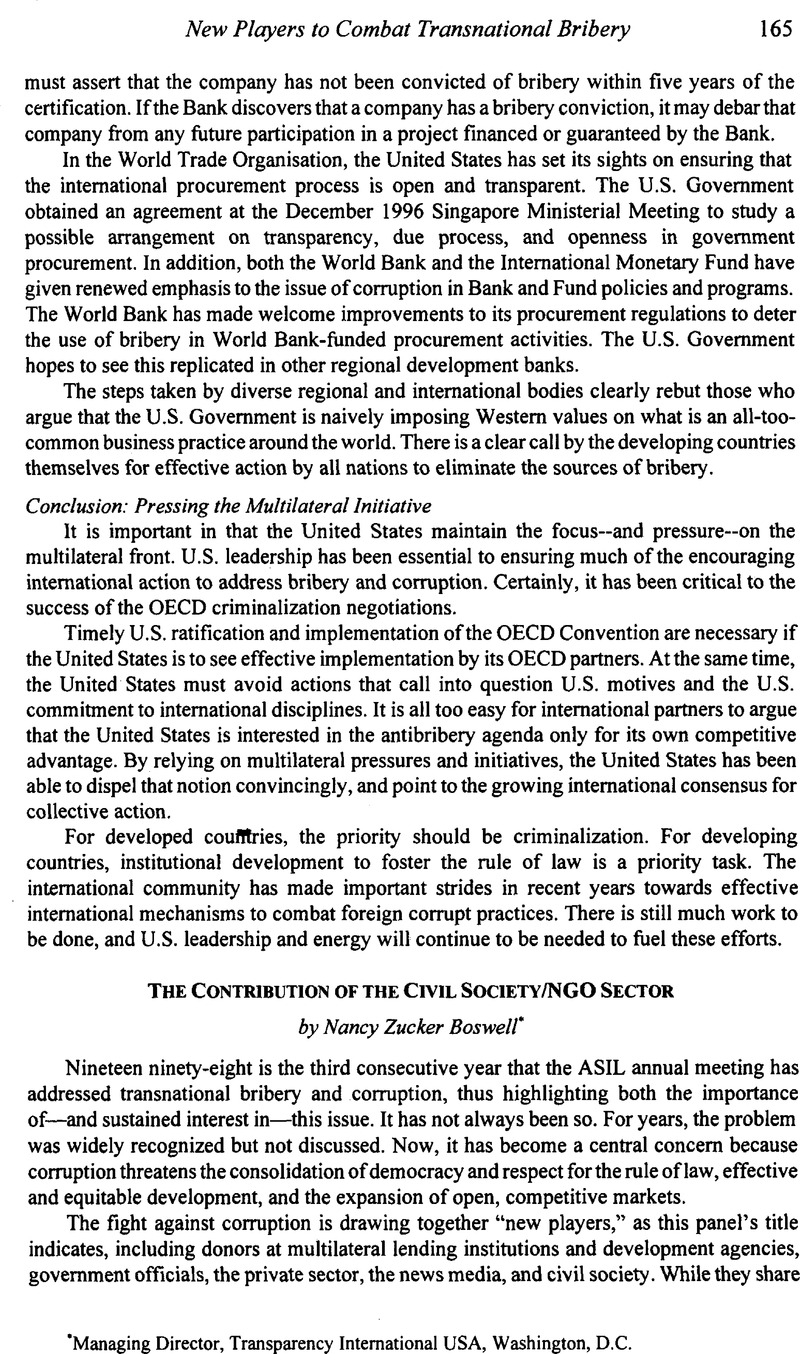No CrossRef data available.
Published online by Cambridge University Press: 28 February 2017

1 Declaration of Principles and Plan of Action, Summit of the Americas, Miami, Fia., Dec. 9-11, 1994.
2 Final Communiqué, Ministerial Forum Against Corruption, Pretoria, South Africa, Nov. 14, 1994.
3 Declaration on Partnership for Sustainable Growth, adopted Sept. 1996 at World Bank/IMF Annual Meetings, Washington, DC.
4 OECD Recommendation on the Tax Deducibility of Bribes of Foreign Public Officials, adopted Apr. 11, 1996, C(96)27/FINAL.
5 Convention on Combating Bribery of Foreign Public Officials in International Business Transactions, signed Dec. 17, 1997, in Paris, France (OECD Convention).
6 OECD Convention, Art. 1.
7 Inter-American Convention Against Corruption, signed Mar. 29, 1996, in Caracas, Venezuela (OAS Convention).
8 Basic Procurement Policies of the IDB (1995), Addendum—Jan. 1998.
9 The World Bank Corruption Action Plan Working Group, created to develop an anticorruption action plan, issued its report at the Sept. 1997 Bank/Fund annual meetings in Hong Kong, Helping Countries Combat Corruption: The Role of the World Bank. The Bank has committed to becoming active in four areas: (1) preventing corruption in bank-financed projects, (2) helping countries reduce corruption, (3) taking corruption more explicitly into account in assistance strategies and lending considerations and (4) supporting international efforts to reduce corruption.
10 The Role of the IMF in Governance Issues: Guidance Note (approved by the IMF Executive Board July 25, 1997).
11 Pub. L. No. 95-213, 91 Stat. 1494 (1977).
12 In 1996, TI-USA developed a Best Practices Survey based on the American corporate compliance experience, which has provided guidance to American and foreign companies. It has also contributed to the work of the International Chamber of Commerce.
13 International Chamber of Commerce, Extortion and Bribery in International Business Transactions (Revisions to the 1977 Report and Rules of Conduct to Combat Extortion and Bribery) (Mar. 26, 1996).
14 See Helping Countries to Combat Corruption: The Role of the World Bank, Sept. 1997, at 31.
15 The Leadership Council For Inter-American Summitry, From Talk to Action: How Summits Can Help Forge a Western Hemisphere Community of Prosperous Democracies (1998).
16 Michel Camdessus, The IMF and Good Governance, address before a meeting of Transparency International (France), Paris (Jan. 21, 1998; English translation by the IMF).